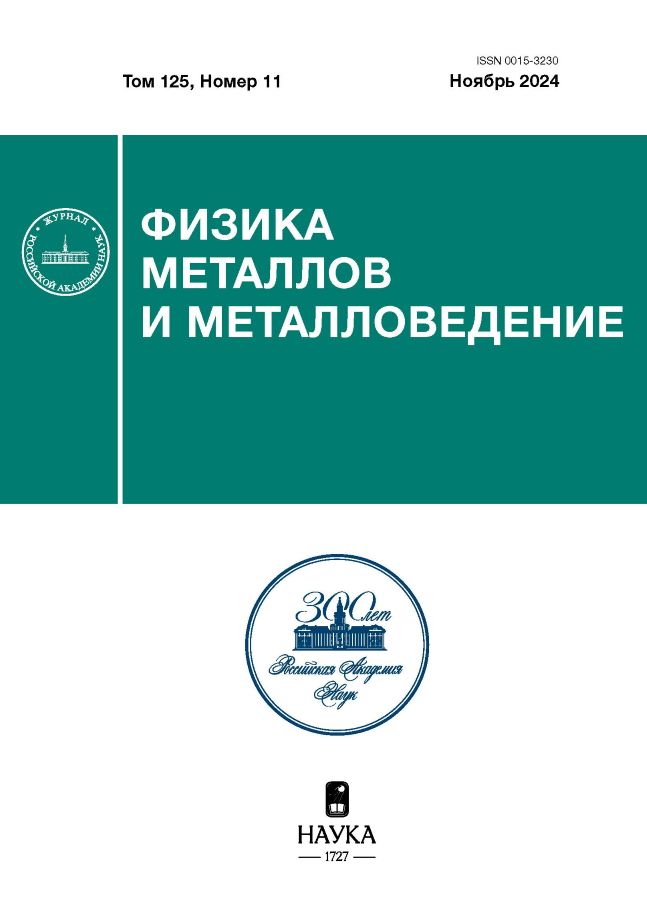A multiscale model of creep in steels with account for the microstructure
- Autores: Khromov K.Y.1, Ryabov V.A.1, Kozlov A.V.2, Panchenko V.L.2
-
Afiliações:
- National Research Center "Kurchatov Institute"
- JSC “Institute of Nuclear Materials”
- Edição: Volume 125, Nº 11 (2024)
- Páginas: 1459-1466
- Seção: ПРОЧНОСТЬ И ПЛАСТИЧНОСТЬ
- URL: https://rjeid.com/0015-3230/article/view/681763
- DOI: https://doi.org/10.31857/S0015323024110154
- EDN: https://elibrary.ru/ILJXTI
- ID: 681763
Citar
Texto integral
Resumo
A multiscale model has been developed to describe the influence of microstructure and alloying element content on the rate of radiation creep in EP823 and EK164 steels. A scheme is proposed for modeling the motion of dislocations and the interaction of dislocations with point defects within the molecular dynamics method, in real alloys containing loops, pores, and precipitates with characteristic sizes and composition determined experimentally. Disordered Fe-based solid solutions of Cr and Cr + Ni corresponding to the specifications of EP 823 and EK 164 steels are used as a matrix. The evolution of the local dislocation density in the grain is calculated using the method of discrete dislocation dynamics, taking into account the dislocation climb and slip. It is shown that the local dislocation density changes with the formation of a microstructure. The distribution of local stresses in the lattice caused by the microstructure is calculated. The creep rate values in FeCr and FeCrNi alloys are calculated taking into account the presence of microstructure. The creep rate values obtained as a result of modeling differ from measured values by 20–50%. Factors limiting the accuracy of the model are revealed, and a modeling algorithm is proposed to improve the accuracy of creep rate prediction.
Palavras-chave
Texto integral
Sobre autores
K. Khromov
National Research Center "Kurchatov Institute"
Autor responsável pela correspondência
Email: khromov_ky@nrcki.ru
Rússia, Moscow, 123098
V. Ryabov
National Research Center "Kurchatov Institute"
Email: khromov_ky@nrcki.ru
Rússia, Moscow, 123098
A. Kozlov
JSC “Institute of Nuclear Materials”
Email: khromov_ky@nrcki.ru
Rússia, Zarechny, Sverdlovsk region, 624250
V. Panchenko
JSC “Institute of Nuclear Materials”
Email: khromov_ky@nrcki.ru
Rússia, Zarechny, Sverdlovsk region, 624250
Bibliografia
- Plimpton S. Fast Parallel Algorithms for Short-Range Molecular Dynamics // J. Comp. Phys. 1995. V. 117. P. 1–19. http://lammps.sandia.gov
- Schuler T., Nastar M., Soisson F. Towards the modeling of the interplay between radiation induced segregation and sink microstructure // J. Appl. Phys. 2022. V. 132. Iss. 8. P. 080903. https:// doi.org/10.1063/5.0100298
- Mansouri E., Olsson P. Modeling of irradiation-induced microstructure evolution in Fe: Impact of Frenkel pair distribution // Comp. Mater. Sci. 2024. V. 236. P. 112852.
- Castin N., Messina L., Domain C., Pasianot R.C., Olsson P. Improved atomistic Monte Carlo models based on ab-initio-trained neural networks: Application to FeCu and FeCr alloys // Phys. Rev. B. 2017. V. 95. P. 214117.
- Khromov K. Yu., Kovalishin A.A., Ryabov V.A., Tsvetkov T.V., Velikhov V.E. A topologically correct method of dislocations construction for atomistic modeling // Comp. Mater. Sci. 2019. V. 156. P. 301–309. WOS:000449375500038, https:// doi.org/10.1016/j.commatsci.2018.09.048 https:// www.ctcms.nist.gov/potentials/.
- Bonny G., Pasianot R.C., Terentyev D., Malerba L. Iron chromium potential to model high-chromium ferritic alloys // Philosop. Magazine. 2011. V. 91(12). P. 1724–1746. https:// doi.org/10.1080/ 14786435.2010.545780
- Béland L.K., Tamm A., Mu S., Samolyuk G.D., Osetsky Y.N., Aabloo A., Klintenberg M., Caro A., Stoller R.E. Accurate classical short-range forces for the study of collision cascades in Fe–Ni–Cr // Computer Physics Communications. 2017. V. 219. P. 11–19. https:// doi.org/10.1016/j.cpc.2017.05.001
- Osetsky Y.N., Bacon D.J., Mohles V. Atomic modelling of strengthening mechanisms due to voids and copper precipitates in α-iron // Philosop. Magazine. 2003. V. 83(31–34). P. 3623–3641.
- Bacon D.J., Kocks U.F., Scattergood R.O. The effect of dislocation self-interaction on the Orowan stress // Phil. Mag. 1973. V. 28 (6). P. 1241–1263. https:// umet.univ-lille.fr/Projets/RheoMan.
Arquivos suplementares















